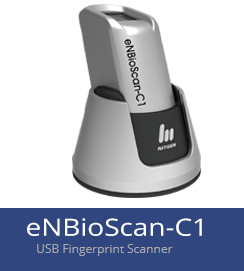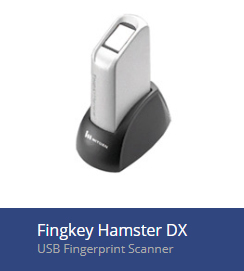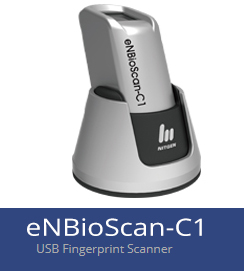What is your method of self-identification? Probably by sharing your name or other personal information such as your age, address, and so on. What if you’re asked to prove that these facts are correct? It’ll probably make you reach for your wallet and pull out an ID card, such as a driver’s license or a social security card, to establish the validity of what you claimed. IDs have been used to verify identities for a long time, yet they are now readily available for faking someone else’s identity. IDs are no longer used to verify identity; instead, they are used to make an identity claim. On the digital front, we’re having issues with passwords, which are the usual method of identifying electronic gadgets. They are becoming increasingly complicated while remaining insecure.
Fingerprint Reader
Why do we require biometric identity in the first place? Traditional methods of identifying are failing to meet modern requirements such as efficiency, security, and accuracy, among others. Government-issued identification cards and documents, such as driver’s licenses, passports, and badges, have long been used for identification and authentication. They make use of the concept of having something that no one else has, which can help you stand out from the crowd. Passwords, PINs, security questions, and other digital security features bear this obligation. The notion is that you know something that only a few people are aware of. Other technology-based techniques include smart cards, access cards, and the like. However, the core concept is that you need an item to identify oneself. In recent years, biometric identification has become increasingly commonplace. The following are the main reasons for this rising popularity:
- Many countries have already begun to work toward establishing biometric identities for their populations.
- Biometric time attendance is being used by an increasing number of commercial companies for applications like staff attendance, door security, and logical access.
- Biometric capability (e.g. fingerprint, face, and iris recognition) is being integrated by manufacturers into mobile and desktop devices.
eNBioScan-C1 Fingerprint Scanner
Advantages of biometric Identification Biometrics’ increasing popularity demonstrates that it is filling the holes left by older identification methods. Instead of inputting a PIN or swiping a pattern (which also involves strain in failed attempts), I prefer to use their phone’s fingerprint sensor. Your hand becomes so accustomed to scanning your finger while picking up your phone from the table or removing it from your pocket that it is already unlocked by the time your eyes land on the screen. Identification and authentication in a fast One of the biggest drawbacks of traditional identification is that the identification or identity verification procedure can be excruciatingly lengthy. The days of showing a government-issued ID as proof of identity are long gone; currently, with the rise in identity fraud and counterfeit IDs, they are no longer valid. Biometric identification addresses the issue at its source. It eliminates the requirement for you to carry an external item to establish your identification. On-the-go identification Mobile biometrics applications and devices have grown rapidly around the world. Every year, manufacturers introduce new and novel methods for mobile device identity identification, and service providers develop services that combine mobile biometrics technology. It has provided an opportunity to address the difficulties encountered during on-the-go identity verification. Convenience Another benefit of biometric identification is its convenience. We’ve already explored how using IDs or passwords to identify yourself might be a nerve-wracking experience. Digging through government databases or waiting for a government agency to respond to an identity verification request can be a time-consuming operation. Not only that but remembering passwords and PINs has become a memory test in recent years. If you don’t push all those out-of-dictionary sentences with numbers and special characters into your head like a multiplication table, they’ll vanish. Biometric identity eliminates all of the problems associated with IDs, passwords, and other possession or knowledge-based identification approaches, resulting in a truly convenient identification experience.
eNBioScan-S Scanner
 Accountability Following a biometric scan, access to a biometrically guarded logical or physical facility needs the presence of an authorized individual. This creates dependable and auditable access logs for the facility. These logs provide proof of willful access, so users cannot dispute them. It raises the level of user accountability. Security Biometric identifiers, unlike IDs and other printed identity documents, cannot be counterfeited or stolen. Passwords or PINs can be guessed, stolen, or hacked. Although some security researchers have demonstrated that spoofing can be used to hack fingerprint or facial recognition systems, newer systems are equipped with more advanced spoofing-proof technology that will not accept anything less than a live biometric identifier, making biometrics more secure than other identification methods. Advantages of each modality The following sections go over the benefits of the most prominent biometric identification systems in terms of modality: Advantages Low-cost implementation The most advanced biometric identification technique High level of reliability Simple to set up and utilize Face Recognition Device
Accountability Following a biometric scan, access to a biometrically guarded logical or physical facility needs the presence of an authorized individual. This creates dependable and auditable access logs for the facility. These logs provide proof of willful access, so users cannot dispute them. It raises the level of user accountability. Security Biometric identifiers, unlike IDs and other printed identity documents, cannot be counterfeited or stolen. Passwords or PINs can be guessed, stolen, or hacked. Although some security researchers have demonstrated that spoofing can be used to hack fingerprint or facial recognition systems, newer systems are equipped with more advanced spoofing-proof technology that will not accept anything less than a live biometric identifier, making biometrics more secure than other identification methods. Advantages of each modality The following sections go over the benefits of the most prominent biometric identification systems in terms of modality: Advantages Low-cost implementation The most advanced biometric identification technique High level of reliability Simple to set up and utilize Face Recognition Device
Nitgen UBio-X Face
Advantages Non-intrusive a high level of social acceptance Setup is simple and inexpensive. It’s possible to set it up on a PC using a webcam. Iris Recognition Device Advantages High precision. It’s difficult to spoof. A newer system can scan the iris from afar. Conclusion eTop solution’s Biometric identification Devices, like most other technology-based solutions, offers its own set of benefits. However, whether it is more advantageous or unfavorable to deploy depends on the specific use case. Biometric identification has proven to be more useful in the long term in the majority of circumstances. With increased production and economies of scale, biometric systems are likely to become even more affordable as more are deployed.




Recent Comments